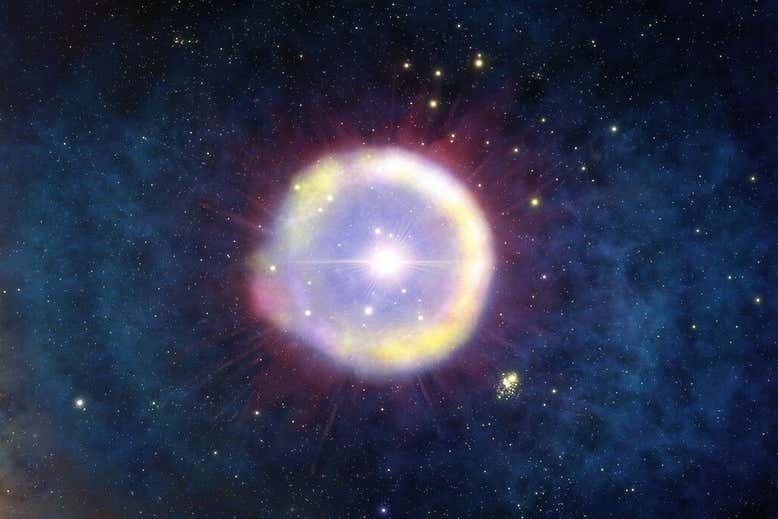30.09.2022
Astronomers examining a quasar may have found remnants of the explosion of one of the first stars in the universe, a behemoth about 300 times more massive than the sun

An artist’s impression of Population III stars, the very first stars in the universe
NSF's NOIRLab
We may have found traces of the very first stars in the universe. These strange objects, called Population III stars, are expected to have exploded in massive supernovas that destroyed the stars entirely, and astronomers may have seen remnants from one of these extraordinary events.
Yuzuru Yoshii at the University of Tokyo and his colleagues found these hints while examining the light of a quasar, an extremely bright object at the centre of a galaxy powered by matter falling into a supermassive black hole. This particular quasar, called J1342+0928, is one of the most distant ever spotted at nearly 30 billion light years away. It formed less than 700 million years after the big bang.
The spectrum of the quasar’s light revealed a huge amount of iron, more than 20 times as much as the sun has. The quasar also seems to have a very low concentration of magnesium. These elements are important because they are produced in different processes, so their relative abundances can be used to determine what kind of cosmic object they came from. The abundances found in this quasar could not be explained by standard models.
The researchers found that the most reasonable way to produce so much iron so soon after the big bang was in a pair-instability supernova: a special kind of explosion that only occurs in extraordinarily massive stars, wherein they explode completely and leave no stellar core behind, unlike other kinds of supernovae. If such a supernova exploded close to quasar J1342+0928, debris would then fall towards the galaxy’s centre, eventually becoming incorporated into the quasar.
The amount of magnesium produced in such a supernova is determined largely by the mass of the star that exploded. “I was delighted and somewhat surprised to find that a pair-instability supernova of a star with a mass about 300 times that of the sun provides a ratio of magnesium to iron that agrees with the low value we derived for the quasar,” said Yoshii in a statement.
This is the clearest signature of a pair-instability supernova yet, he said. Because these supernovas can only occur in stars more than about 130 times as massive as the sun, this may also be evidence for the existence of Population III stars, which would have all been destroyed long ago.
These stars are crucial to our understanding of the universe, because they would have been the first to produce elements more massive than helium. They are also often considered to be potential seeds for supermassive black holes, which are so unimaginably huge that it is hard to find a way to create them in the early universe without similarly colossal stars.
Quelle: NewScientist
